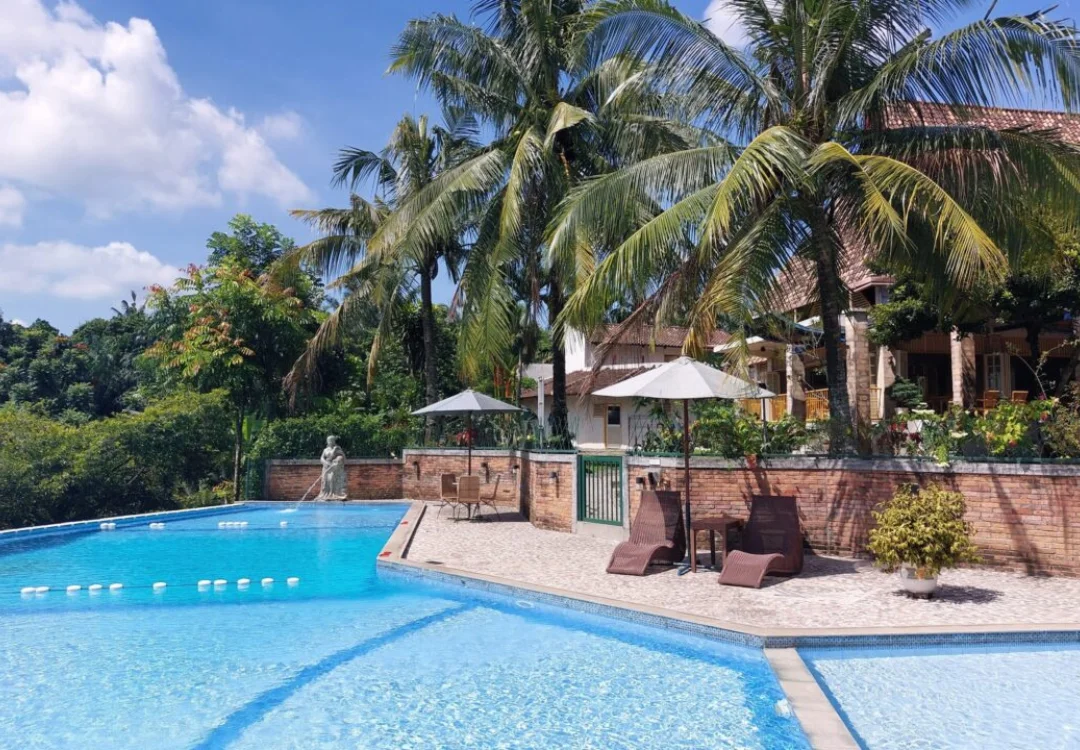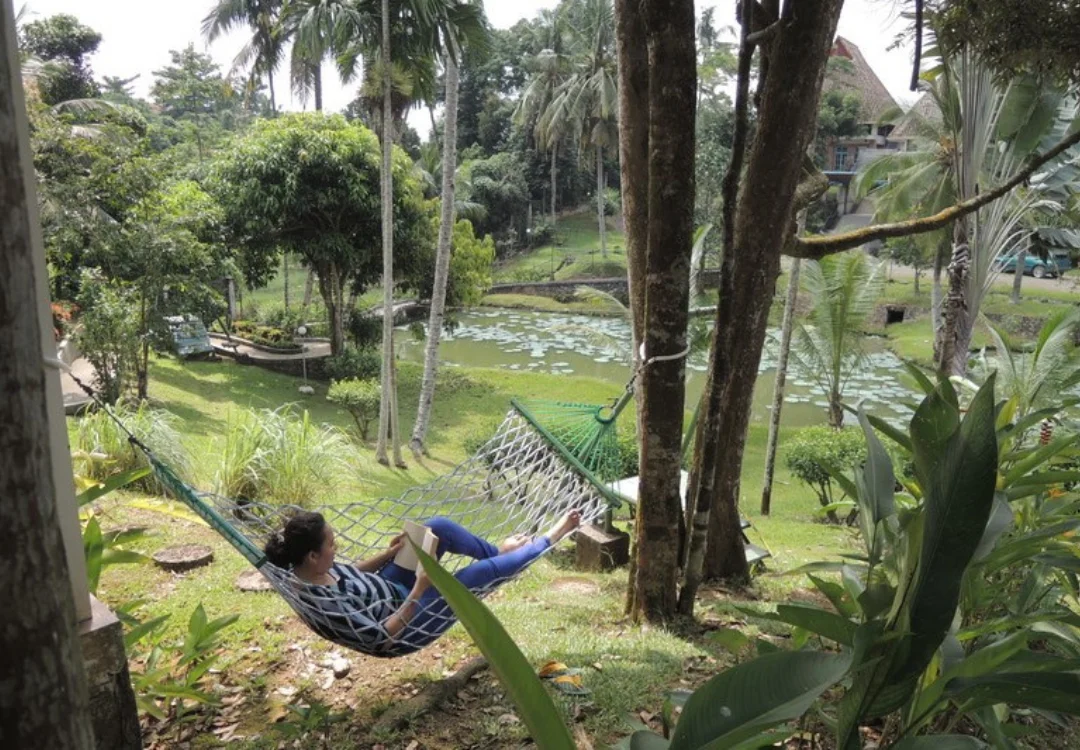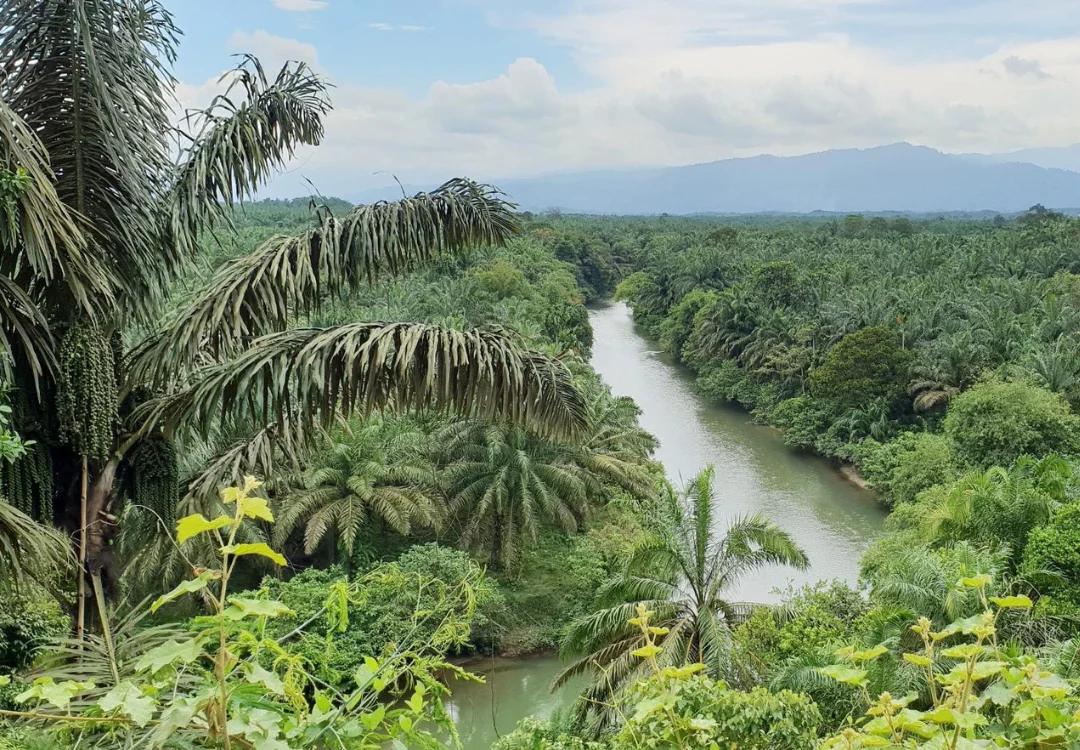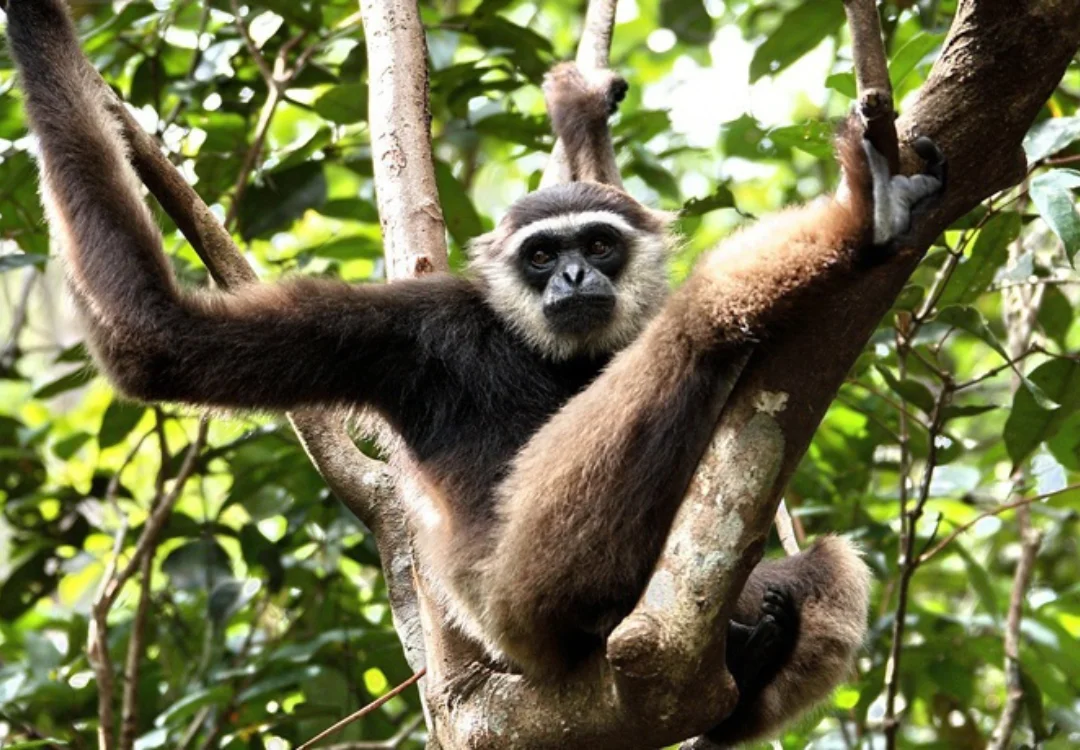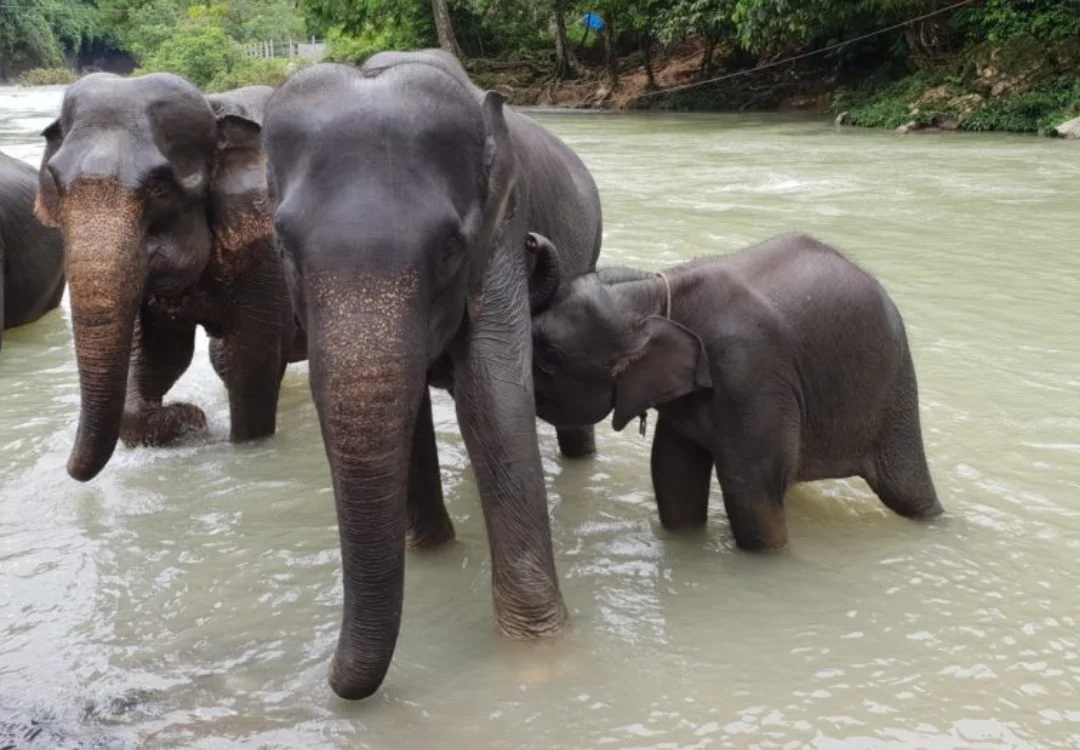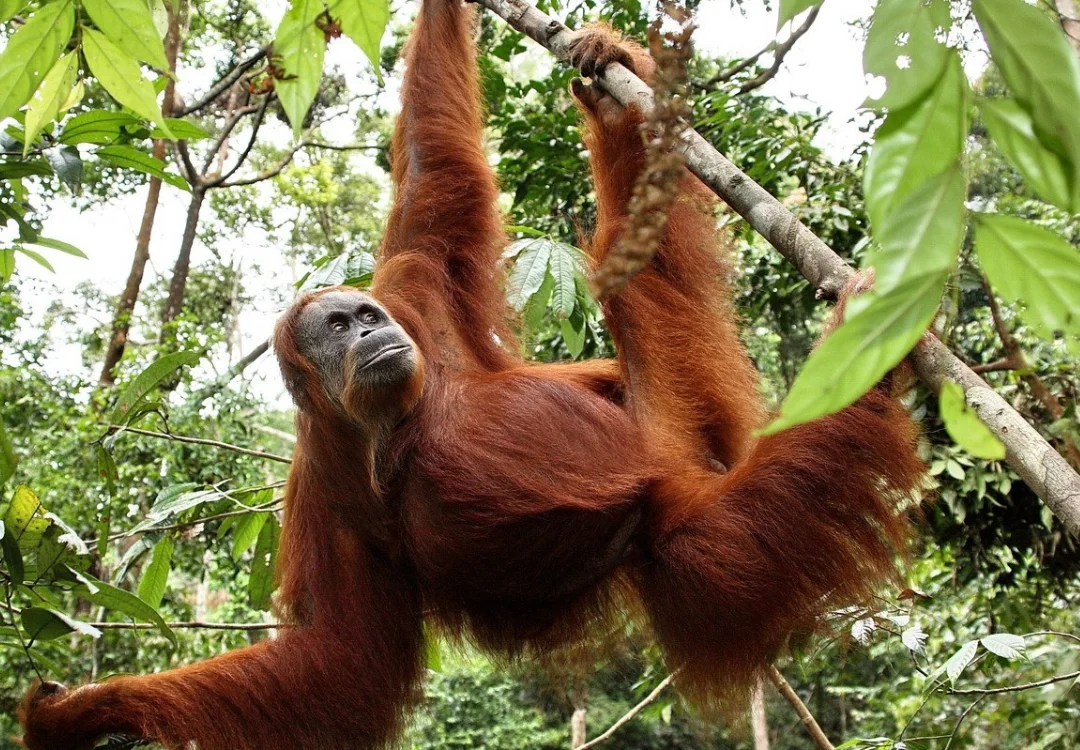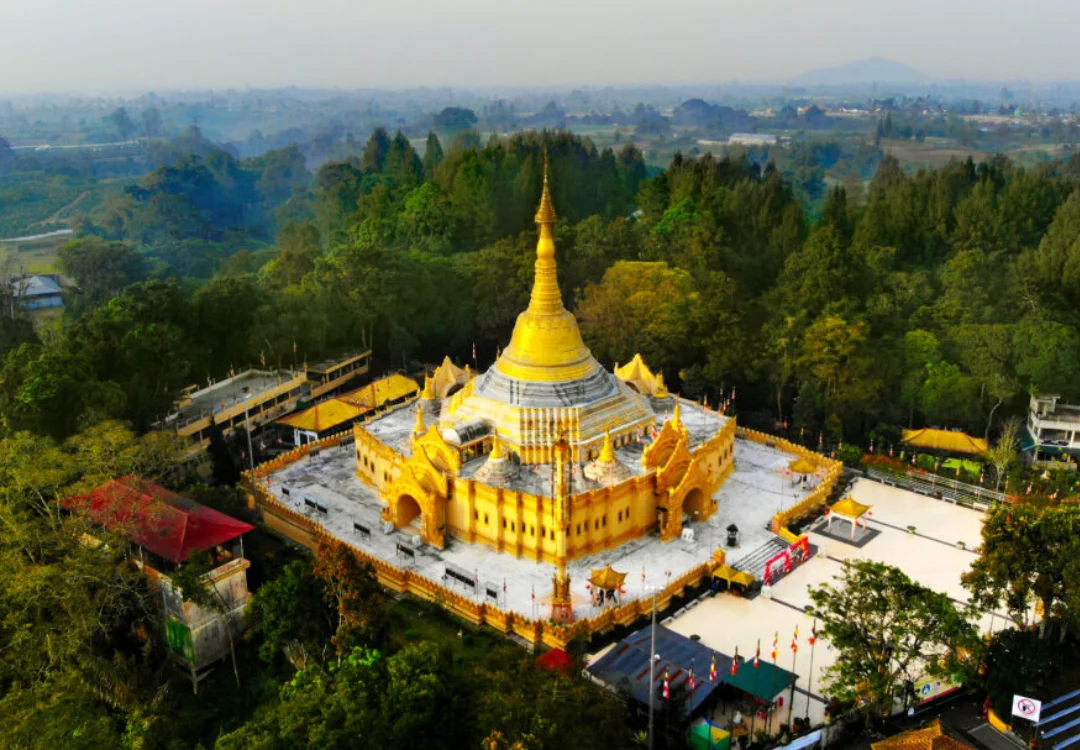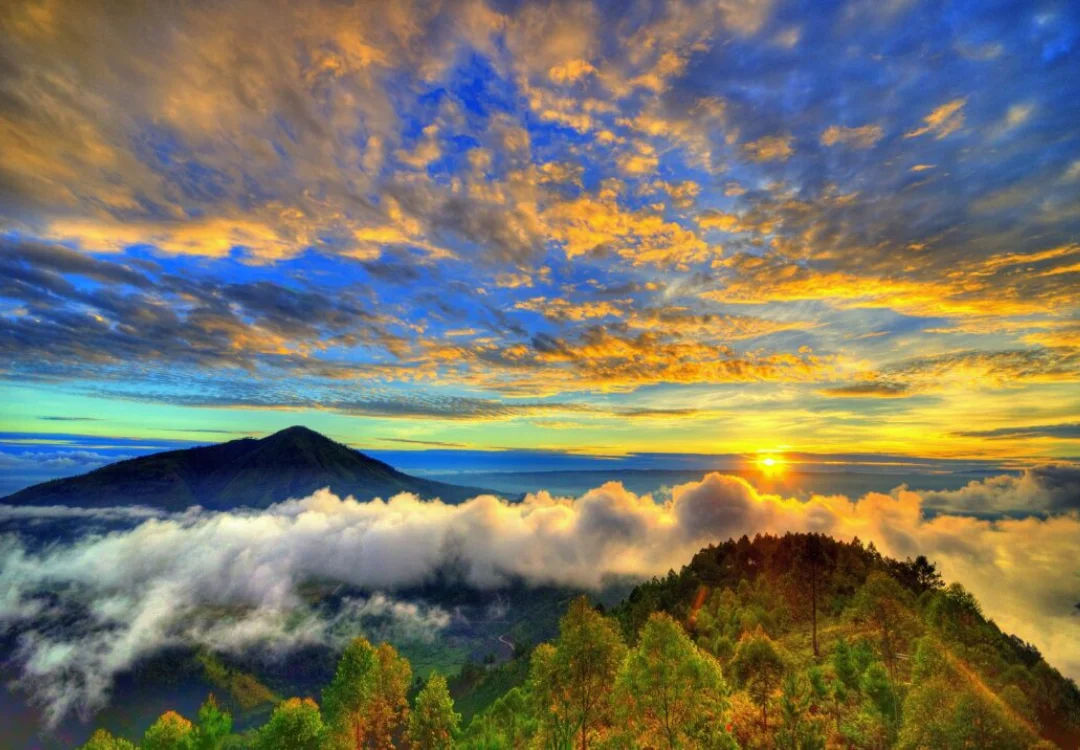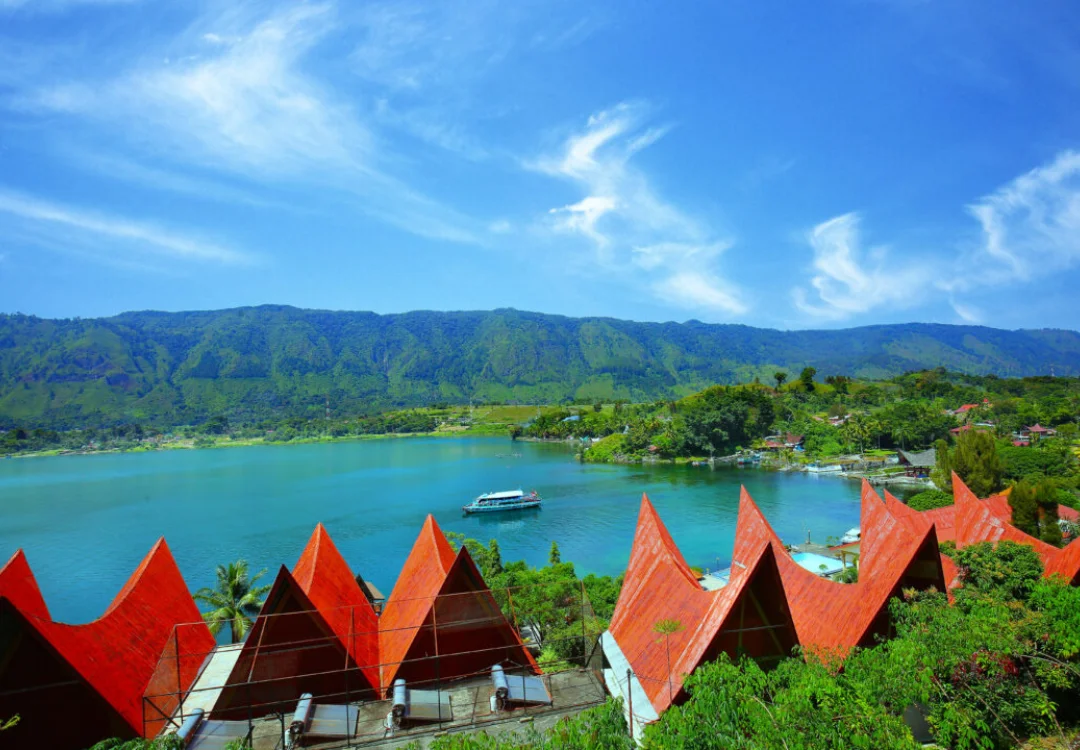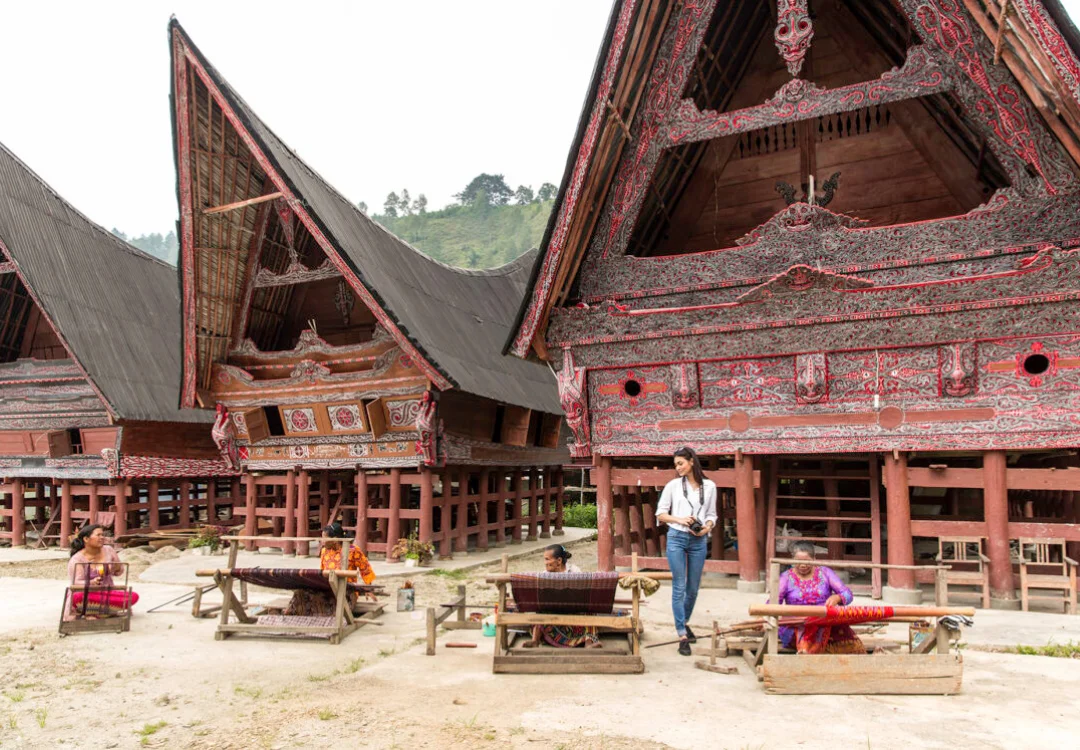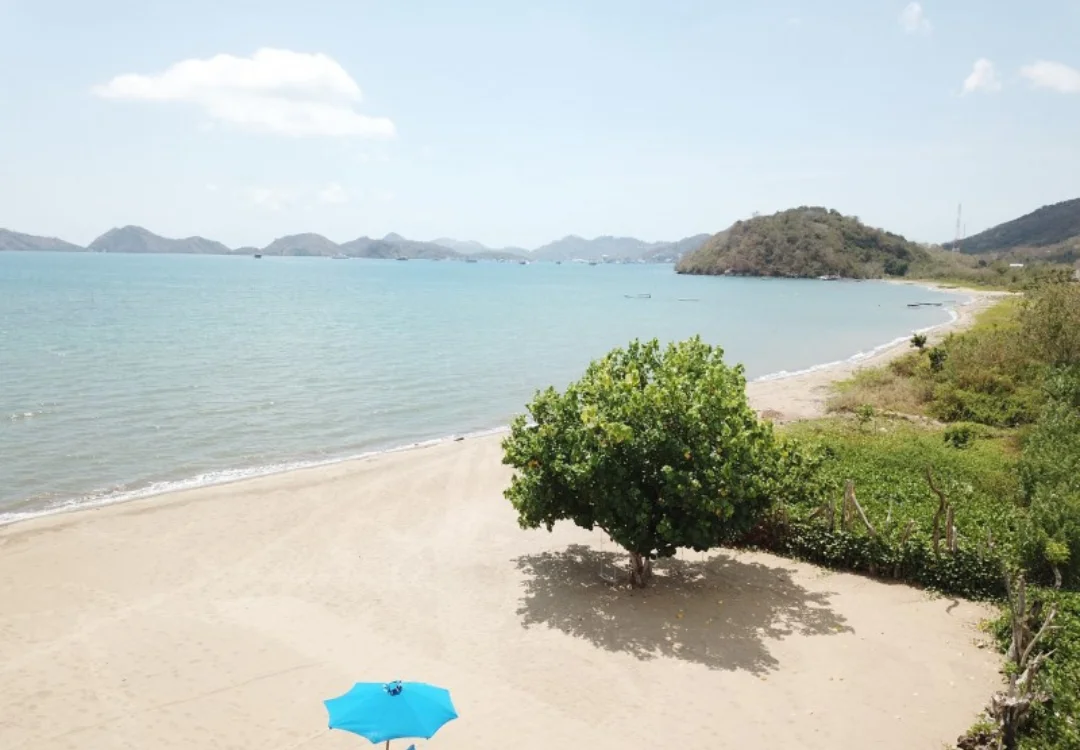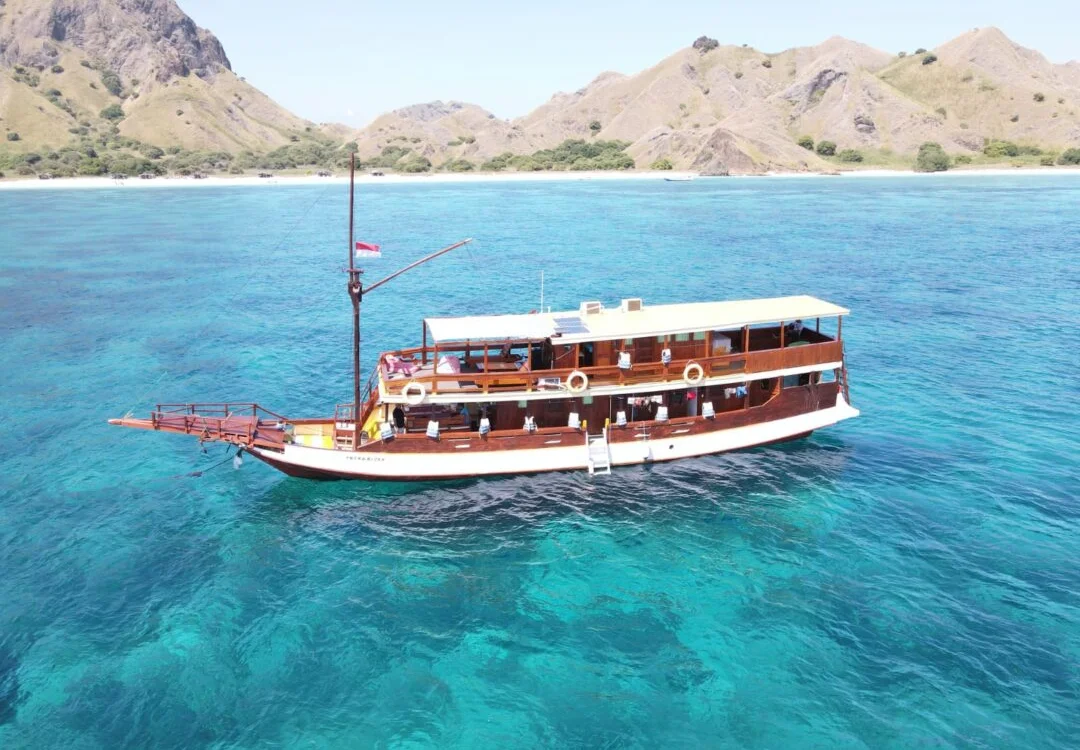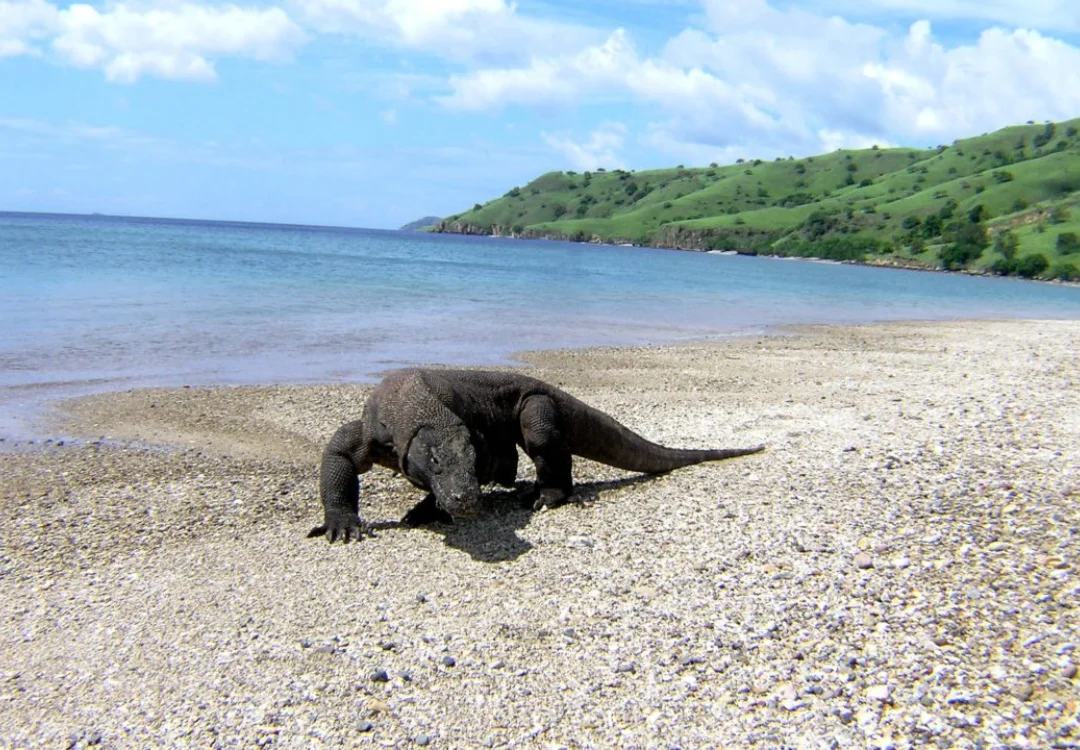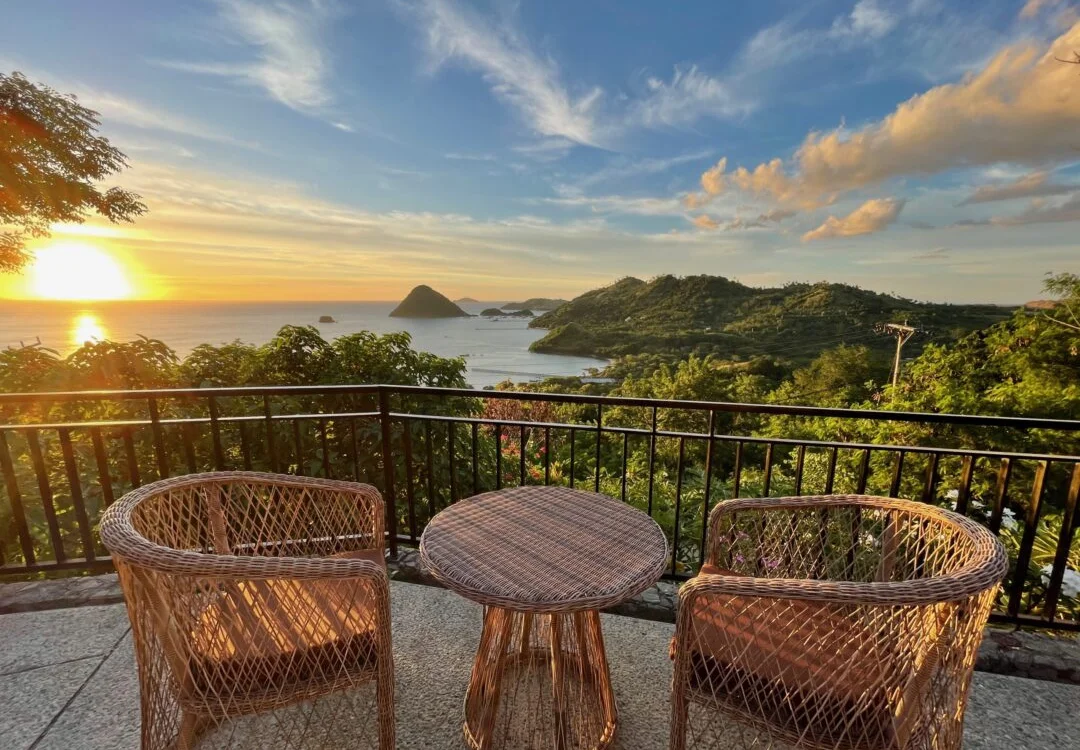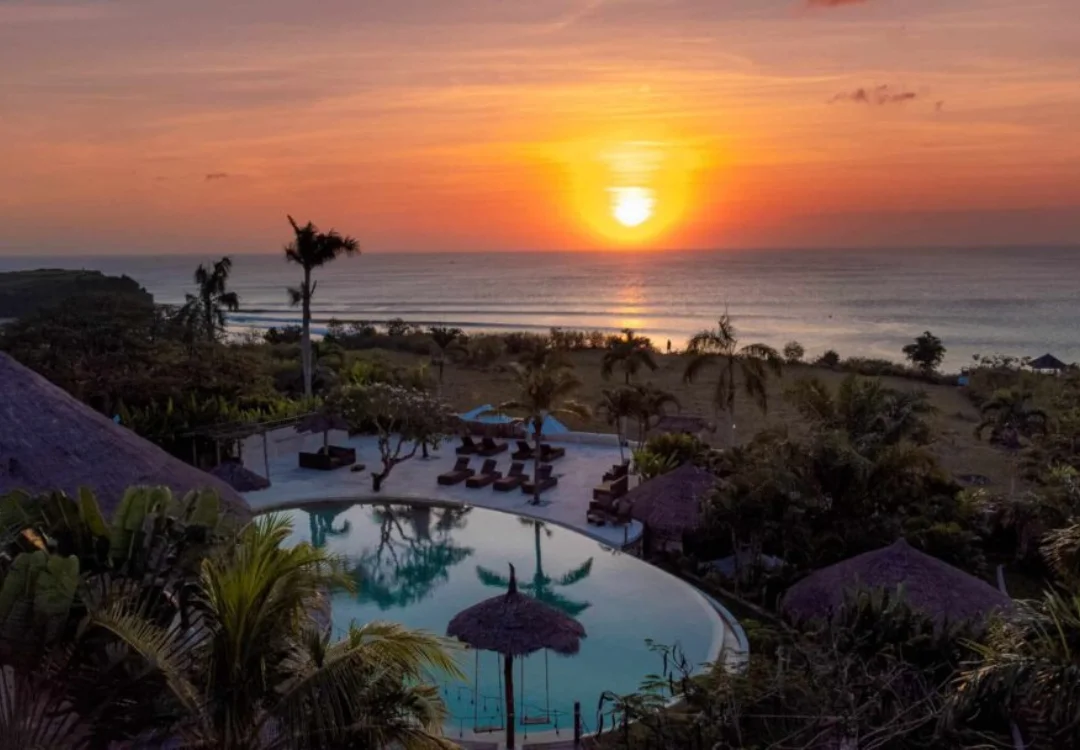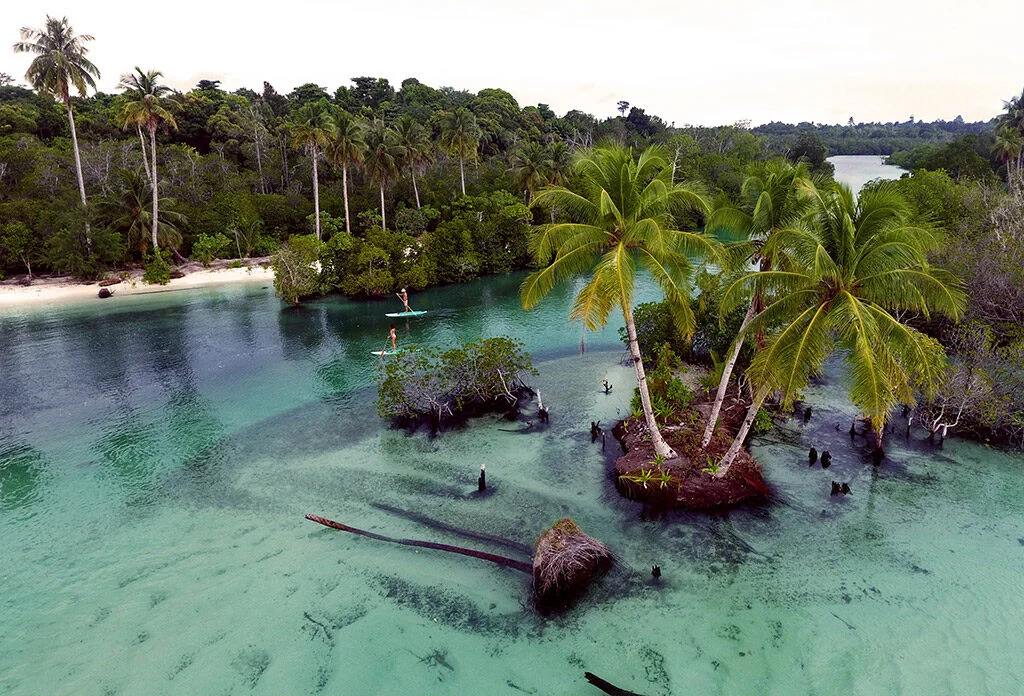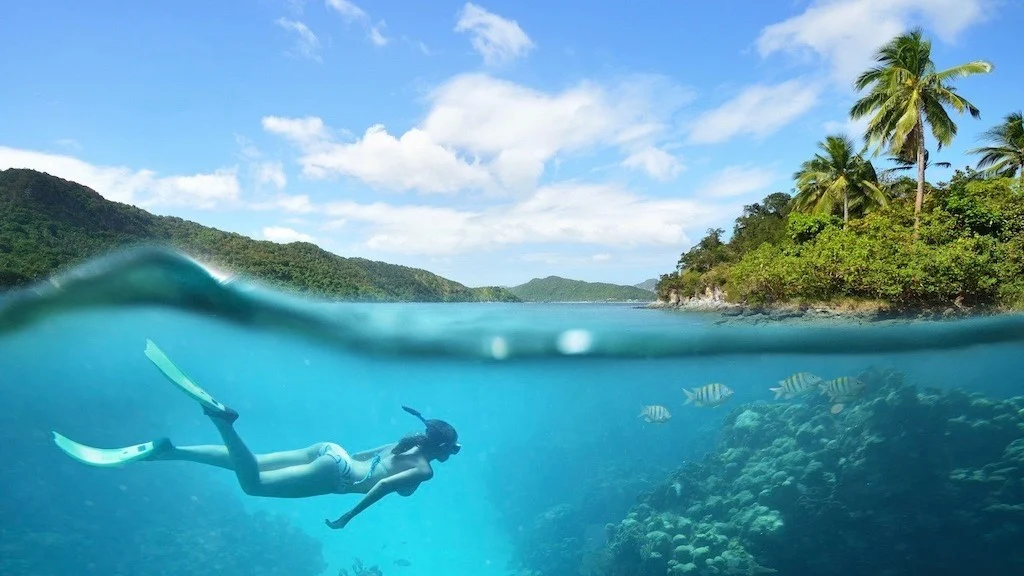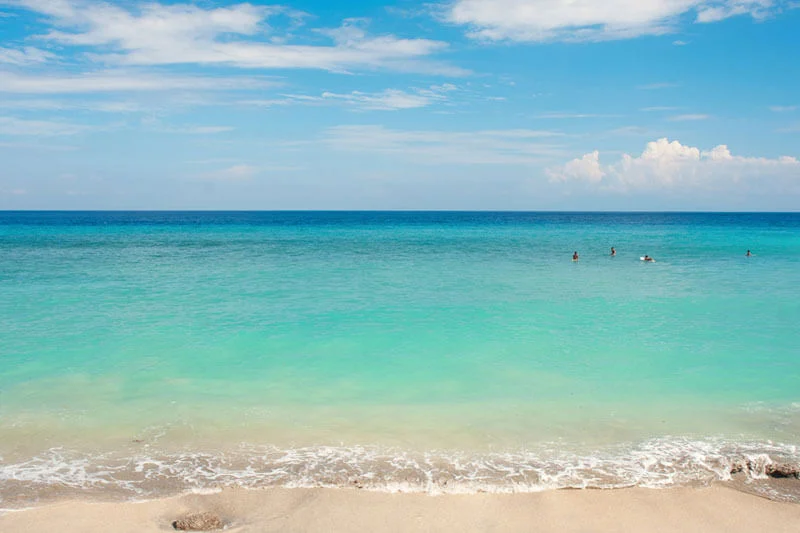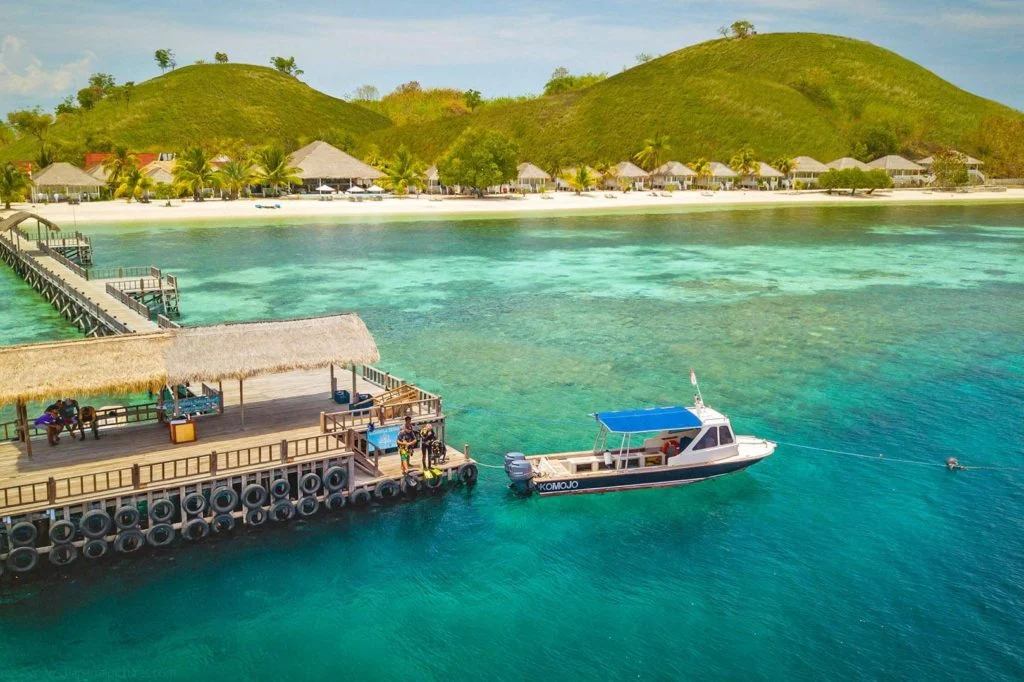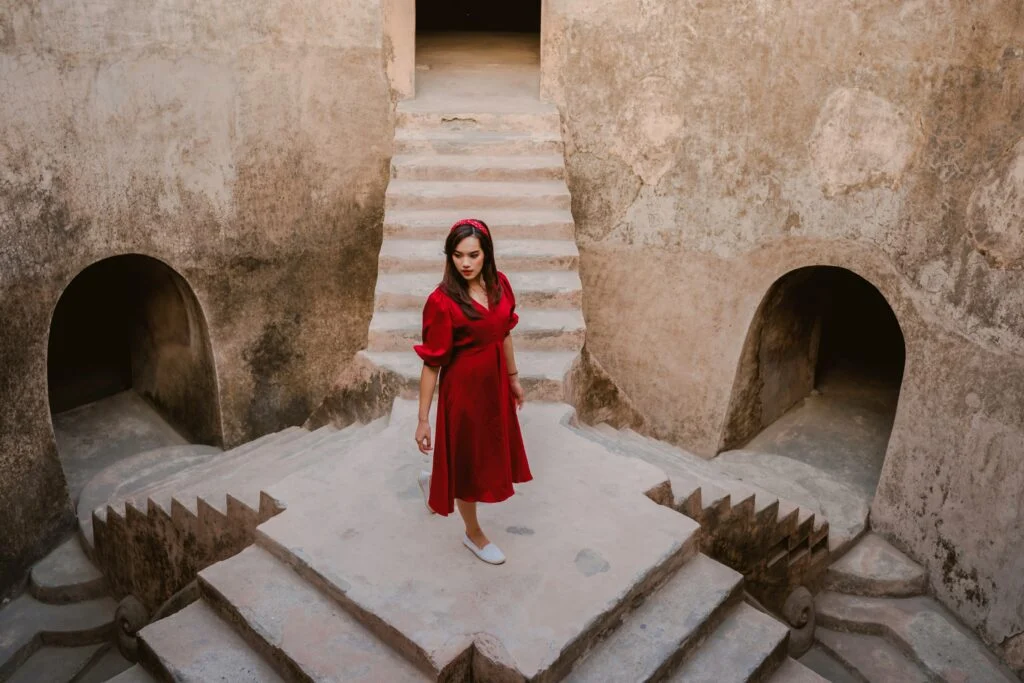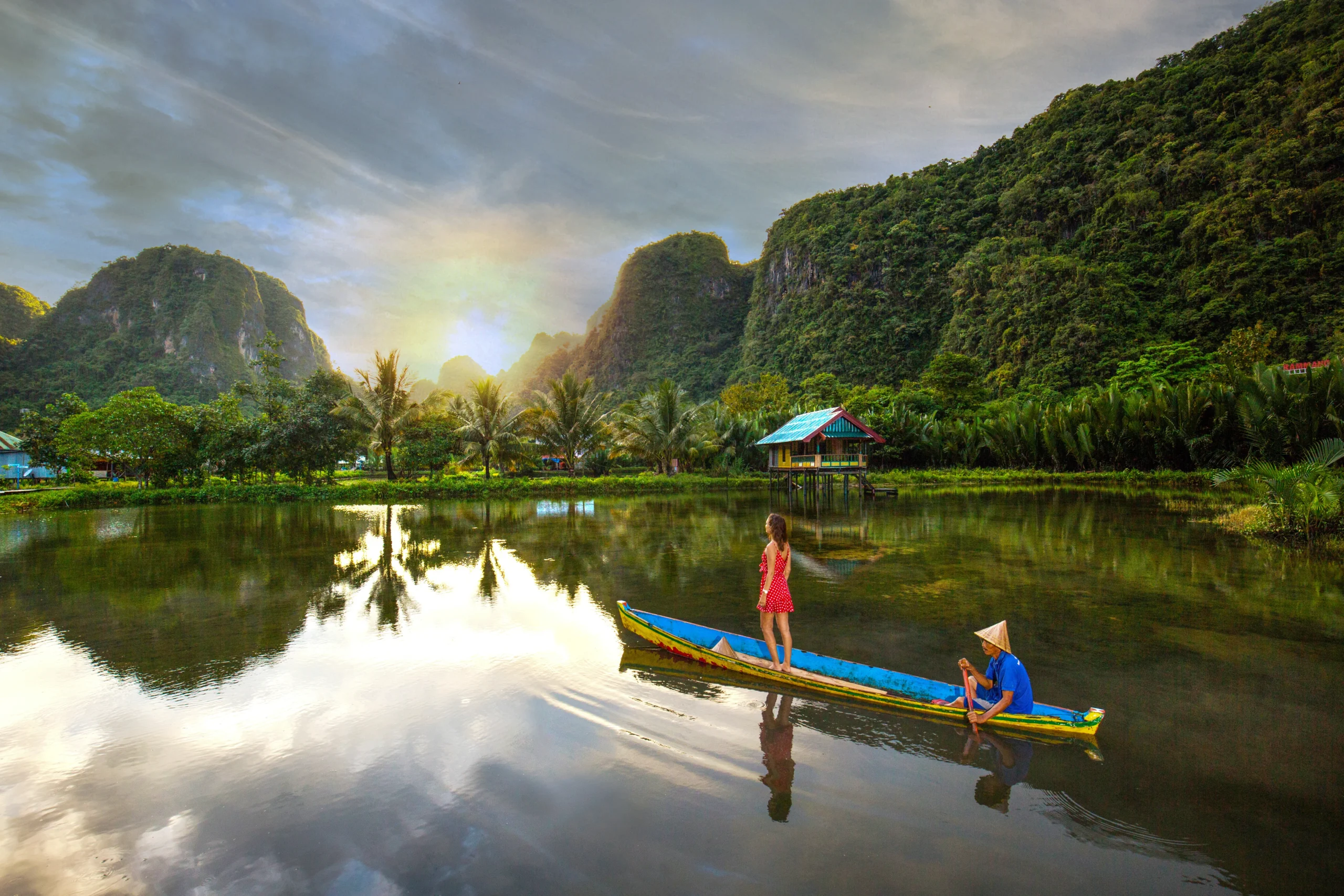Orangutans in the Leuser National Park and a sailing cruise through the Komodo National Park
Komodo Dragons & Orangutans
The Leuser National Park: A habitat for orangutans
The Leuser National Park is one of the last remaining refuges for orangutans in Sumatra and covers an area of 2,700 square kilometres. This unique ecosystem is home not only to orangutans, but also to numerous other endangered species, such as the Sumatran tiger and the Javan horse, as well as an extensive variety of plant species. The complex habitats that the park offers vary from tropical rainforest to mountain forests and wetlands. This biodiversity is crucial for the survival of the orangutans, as they depend on certain plants for food intake.
The preservation of this biodiversity is a vital task that is carried out by cooperation between indigenous communities and nature conservation organizations. Indigenous peoples of the area play a central role in the protection of the national park, as they traditionally have a deep knowledge of the region and its resources. Involving these communities in conservation not only protects the orangutans’ habitat, but also respects the way of life of the people who are closely connected to nature.
In addition, numerous conservation organizations are dedicated to the protection and restoration of the habitats of the orangutans. These organizations work on programs to reforest and reduce deforestation caused by illegal logging and agricultural practices. Education and public awareness are additional measures used to raise awareness of the plight of these majestic animals. Each of these steps is of great importance to ensure the survival of the orangutans in the Leuser National Park and thus also to promote the health of the entire ecosystem.
Komodo Dragons & Orangutans
The Orangutans: Behavior, Way of Life and Protection
Orangutans are fascinating primates that are native to the tropical rainforests of Leuser National Park. Their impressive intelligence and adaptability set them apart. In the wild, these animals live in relatively small social groups, typically consisting of mothers and their offspring. The strong mother-child bond is crucial for survival, as mothers are responsible for raising and learning the young. The diet of the orangutans consists mainly of fruits, leaves, bark and occasionally insects. This diverse diet proves their role as important frugivores, as they contribute to the dispersal of seeds in their habitat.
Orangutans reproduce at irregular intervals, with females giving birth every five to eight years and a gestation period of about 8.5 months. Raising the young in the first years of life is time-consuming and requires both physical and emotional resources from the mothers. Progressive destruction of their habitat poses a considerable threat. Deforestation, illegal agriculture and the illegal wildlife trade endanger not only the orangutans, but also the entire biodiversity of the Leuser National Park.
In order to counteract this danger, various protective measures and projects have been launched. This includes educational measures for the local population, the promotion of sustainable lifestyles and the protection of natural habitats. Organizations are actively working to improve conditions in the forests and preserve the orangutans’ habitat in the long term. It is crucial to raise awareness of these wonderful creatures and ensure that future generations have the opportunity to experience orangutans in their natural environment.
Discovery of Leuser National Park and Lake Toba in Sumatra
Komodo Dragons & Orangutans
Introduction to the Leuser National Park
The Leuser National Park, located in the heart of the Indonesian island of Sumatra, covers an area of about 2,600 square kilometers. This impressive area includes both mountain and lowland forest areas, thus providing a diverse habitat for a variety of flora and fauna. Since 1997 the park is a World Heritage Site by UNESCO. It plays a crucial role in global conservation. Its value lies not only in its biodiversity, but also in its function as an important carbon sink that helps mitigate global warming.
The biodiversity in the Leuser National Park is remarkable: the endangered Sumatran tiger (Panthera tigris sumatrae) and the orangutan (Pongo abelii), both of international importance for the ecosystem and the conservation of rare animal species, live here. Other significant species found in this area include Asian elephants, gibbons and numerous bird species that attract many ornithologists. These species are not only symbiotically connected to their habitat. They also bring ecological stability to the region.
In addition to its biological importance, the Leuser National Park is also culturally significant. The surrounding communities are heavily dependent on the park’s natural resources. Traditional ways of life and sustainable practices are closely linked to the ecosystems that have served as the basis of human life for generations. However, despite this cultural relevance, the park faces challenges such as deforestation, illegal hunting, and the influence of climate change. The preservation of the Leuser National Park is therefore of great importance, both for the local population and for the global community, which benefits from biodiversity and ecological services.
Komodo Dragons & Orangutans
Lake Toba: a natural jewel
Lake Toba, the largest volcanic lake in the world, stretches majestically over an area of about 1,130 square kilometers in the heart of Sumatra. Its formation dates back to one of the most powerful volcanic eruptions on earth about 74,000 years ago, which released an immense amount of ash and lava. This eruption led to the formation of today’s basin and had a profound impact on the Earth’s climate. Lake Toba is not only an impressive geological phenomenon, but also an important ecological habitat that is home to a variety of flora and fauna.
The surroundings of Lake Toba offer a breathtaking backdrop of hilly landscapes, lush vegetation and dotted blue water surfaces that characterize the landscape. Visitors can enjoy numerous activities, including boat tours on the tranquil daylight-flooded waters. These tours allow not only to explore the natural beauty of the lake, but also to explore small islands such as Samosir, which lie in the middle of the lake. Known for its rich culture, Samosir is the perfect place to get to know the traditional Batak villages and the unique customs of the locals.
In addition to relaxing boat trips and hikes in the surrounding hills, Lake Toba also offers a rich cultural heritage interwoven with various mythological stories. One of the most famous legends is about the creation of the lake and tells of a tragic love story between humans and gods. These narratives are an integral part of the local traditions of the Batak community, which prides itself on sharing its culture and history with visitors. Lake Toba is thus not only a place of natural beauty, but also a center of cultural and historical significance in Sumatra.
Komodo Dragons & Orangutans
Activities and experiences in the Leuser National Park and at Lake Toba
The Leuser National Park and Lake Toba offer a variety of activities that appeal to both adventure seekers and those interested in culture. Trekking tours through the dense jungle of the national park allow visitors to experience the impressive ecosystem up close. These guided hikes lead to stunning waterfalls and offer the chance to observe the diverse flora and fauna, including rare species such as orangutans, elephants, and various species of birds. The jungle excursions are not only an opportunity for physical activity, but also a valuable contribution to understanding and appreciating the extraordinary nature of the Leuser National Park.
At Lake Toba, the largest volcanic lake in the world, tourists can take boat trips that offer spectacular views of the surrounding landscape. On these trips, travelers have the opportunity to visit Samosir Island, which is located in the middle of the lake. Here, visitors can gain insights into the culture of the Batak people. Traditional villages where artful craftsmanship is practiced offer authentic interactive experiences and the chance to connect with the locals. Such cultural encounters are crucial for supporting sustainable tourism, which promotes both the preservation of nature and the well-being of local communities.
Another crucial aspect of experiences in this region is the promotion of eco-friendly tourism. Through responsible practices, tourists can help preserve the natural beauty of Leuser National Park and Lake Toba. This is of great importance to ensure that future generations can discover and experience these unique and valuable natural and cultural spaces.
Komodo Dragons & Orangutans
Travel information and tips
The Leuser National Park and Lake Toba in Sumatra are impressive destinations that offer unique nature experiences. There are many ways to get there, with the nearest international airport being Medan.
The best time to visit is during the dry season, which lasts from May to September. During these months, the weather conditions are optimal for exploring both the national park and the lake. Still, it’s important to learn about local weather conditions, as the climate can vary. When it comes to choosing accommodation, travelers have numerous options, from simple guesthouses to luxurious eco-resorts. It’s a good idea to book in advance to secure the best deals and availability.
For a successful travel experience, it is helpful to observe some cultural customs. Respect local traditions and avoid wearing inappropriate clothing in religious sites. In addition, responsible travel is of great importance. Support local businesses and avoid buying souvenirs that come from endangered species or from illegal activities. You should also make sure to dispose of your garbage properly and respect nature to preserve the beauty of the national parks.
Sibayak Volcano Climb: An Unforgettable Sunrise Experience in Sumatra
Komodo Dragons & Orangutans
Introduction to Sibayak Volcano Climbing
The Sibayak volcano climb is an outstanding adventure that knows no season or age limit. For many nature lovers and adventure travelers in Sumatra, climbing to the peaks of this majestic volcanic landscape is a unique opportunity to experience the beauty of nature up close. The ascent at sunrise also offers a breathtaking panorama that is worth every effort.
Komodo Dragons & Orangutans
The ascent to the summit
The challenge of climbing the Sibayak volcano starts early in the morning. Hikers usually start in the dark to reach the summit in time for sunrise. The trail passes through picturesque landscapes with lush greenery and steaming springs. During the climb, participants will have the opportunity to discover the diverse flora and fauna of the region and enjoy the fresh, clear air.
Komodo Dragons & Orangutans
The magical experience of the sunrise
When the first rays of sunlight break through the horizon, the surroundings transform into a breathtaking play of colours of gold, pink and blue. The view from the top of Sibayak is simply spectacular, and the combination of the majestic nature and soft light makes for unforgettable memories. This is the perfect moment to feel peace and tranquillity in the midst of the impressive volcanic landscape.
Komodo Dragons & Orangutans
Introduction to the Phinisi Boat Tour
The Phinisi boat tour in Komodo National Park is an outstanding way to experience the breathtaking beauty of Indonesia while immersing yourself in the cultural traditions of the region. Phinisi boats, which are widely used in Indonesian waters, are known for their elegant construction and historical background. These traditional wooden boats are made by skilled craftsmen and combine centuries-old shipbuilding with modern comforts. They offer travelers the opportunity to relax in a unique environment and explore the natural treasures of Komodo National Park.
A friendly crew is available on board a Phinisi boat to take care of the well-being of the guests. Amenities include spacious cabins, a fully equipped kitchen and dining areas featuring locally inspired dishes. Many boats are also equipped with a sundeck that offers breathtaking views over the sparkling waters of the Indian Ocean. It’s the ideal time to take in the majestic scenery, from dramatic cliffs to white-sand beaches.
Our typical routes of a Phinisi boat tour take visitors through some of the most impressive areas of the national park, where they can observe the amazing wildlife. The chance to see Komodo dragons, sea turtles, and a variety of birds makes this tour particularly exciting. In addition, the colorful coral reefs around the islands offer world-class snorkeling and diving opportunities. The combination of beautiful nature, fascinating animals and the authentic experience aboard a Phinisi tour will make for an unforgettable adventure.
Komodo Dragons & Orangutans
Encounter with the Komodo Dragons
The Komodo dragons, the largest lizards in the world, are an impressive symbol of the unique biodiversity in Komodo National Park. These majestic animals, which can grow up to three meters long and weigh up to 70 kilograms, are fascinating predators that have adapted perfectly to their environment. Their habitat spreads over the volcanic islands of Flores, Gili Motang, Komodo and Rinca. There they live in dry, semi-arid and hilly landscapes. The combination of stony coasts, open grasslands and dense forests offers the dragons space to hunt and hide.
The best way to see the Komodo dragons is to visit Rinca and Komodo Islands, where guided tours are available. These tours allow visitors to get up close and personal with the dragons’ habitat, while trained rangers ensure the safety of both animals and people. The dragons unusually move slow, which only makes them recognizable as dangerous hunters at second glance. Watching their hunting tactics and eating their prey in unique scenes is an unmistakable experience.
The importance of Komodo kites to the ecosystem cannot be overstated. As Apex predators, they play a crucial role by regulating the populations of other animals, which ultimately maintains the balance of the entire ecosystem. Nevertheless, the Komodo dragons are classified as an endangered species due to habitat loss, poaching and climate change. That is why protective measures are of the utmost importance. Various initiatives are committed to the conservation of this unique species, including programs to monitor their populations and educate the local population about the importance of these animals in the ecosystem.
Komodo Dragons & Orangutans
The beauty of Pink Beach and Padar Island
Komodo National Park, known for its fascinating biodiversity and spectacular landscapes, is home to some of Indonesia’s most impressive beaches and islands. Pink Beach is one of the most notable attractions within the park. The beach sand has a delicate pink color that glows in the sun due to red algae mixed with layers of white sand. This unique feature attracts both tourists and photographers who want to capture the beauty of the place. In addition, the beach offers excellent opportunities for swimming and relaxing, as the calm waters are particularly inviting and the dreamlike ambience invites you to linger.
The creative combination of pink colour, crystal clear water and lush, green hills creates a picturesque backdrop. Visitors have the opportunity to go snorkeling and explore the underwater world with colorful coral reefs and diverse marine life. These activities make Pink Beach not only a visual delight but also an experience for the senses.
Near Pink Beach is Padar Island, an island that delights with its breathtaking scenery. Padar is famous for its dramatic beaches that glow in different colors and complete the picture of a postcard-like scenery. The hikes on Padar are a must for nature lovers. You will enjoy an exceptional panoramic views. The climb to the famous viewpoints allows visitors to admire the stunning topography of the island, which is perfect for photos.
The best time to visit the two places is between April and October, when the weather is dry and the temperatures are pleasant. During these months, the conditions are ideal to enjoy both Pink Beach and Padar Island to the fullest and collect the unforgettable moments in Komodo National Park.
Komodo Dragons & Orangutans
Snorkeling in Komodo National Park
Komodo National Park is a true snorkeler’s paradise, characterized by a remarkable variety of underwater life. The crystal-clear waters and colorful coral reefs make it an ideal place to experience marine nature up close. Some of the best snorkeling spots include Manta Point, known for its majestic manta rays, and Pink Beach, where a rich coral reef and numerous species of fish can be found. Visitors can discover a breathtaking underwater world here, ranging from colorful fish to rare sea anemones and impressive turtles.
In order to enjoy snorkeling in Komodo National Park in the best possible way, the right equipment is of central importance. A well-fitting snorkel mask, fins and a wetsuit ensure not only comfort, but also safety in the water. We recommend that you take a short snorkeling course to familiarize yourself with proper technique. The use of suitable sunscreen is also important in order not to damage the sensitive marine ecosystems.
Booking a guided snorkeling tour is a good way to experience the exploration of the park’s underwater world in a protected setting. Professional guides can provide valuable tips, point out the best spots, and provide information about the native species. In addition, it is ensured that safety precautions such as constant supervision by the guides are guaranteed. These tours not only allow for safe snorkeling, but also contribute to awareness and responsibility in dealing with nature. The unforgettable experiences of snorkeling in Komodo National Park are remembered for a long time and are an important addition to any adventure in Indonesia.


